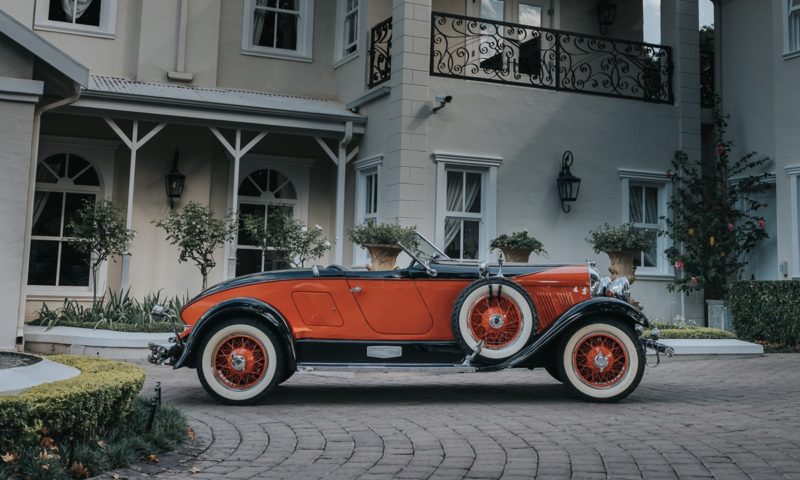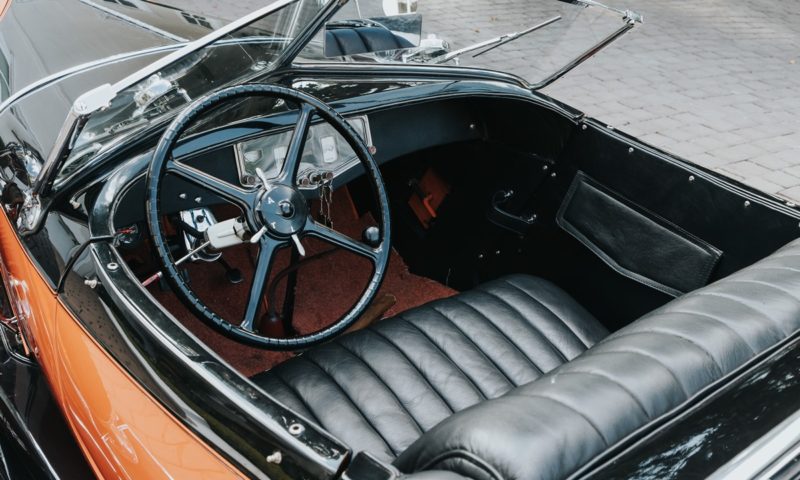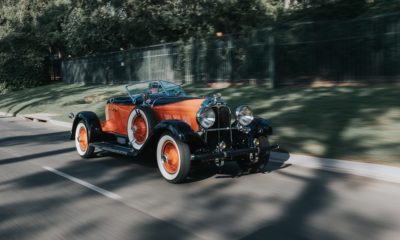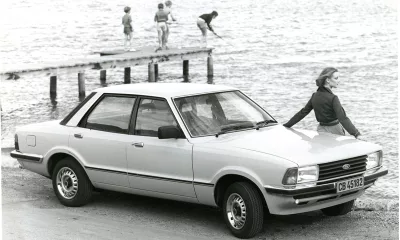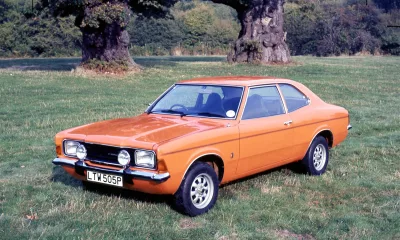Beauty may well be in the eye of the beholder but to me, some pre-war cars ooze an inordinate amount of beauty and elegance from their designs … full stop. Whether American or European, the style and exuberance these cars must have offered at the time are unquestionably special. Of course, the run-of-the-mill cars were doing the rounds but your top-of-range models and cars from new, aspirational brands encapsulate the opulence of the era.
The Auburn Boattail Speedster is right up there with the best. I first saw this car during a visit to the collector, unaware she had this beautiful one-of-a-kind car in her garage. I’ve never seen one up close, so couldn’t help myself and stepped closer. Her husband passed away several years ago and although she has always been actively involved in the car community, she made it even more of a priority to learn how to maintain and even service her cars. Hats off to her as the car looks incredibly neat and she had no problem taking it out for us and sharing the history of the car.
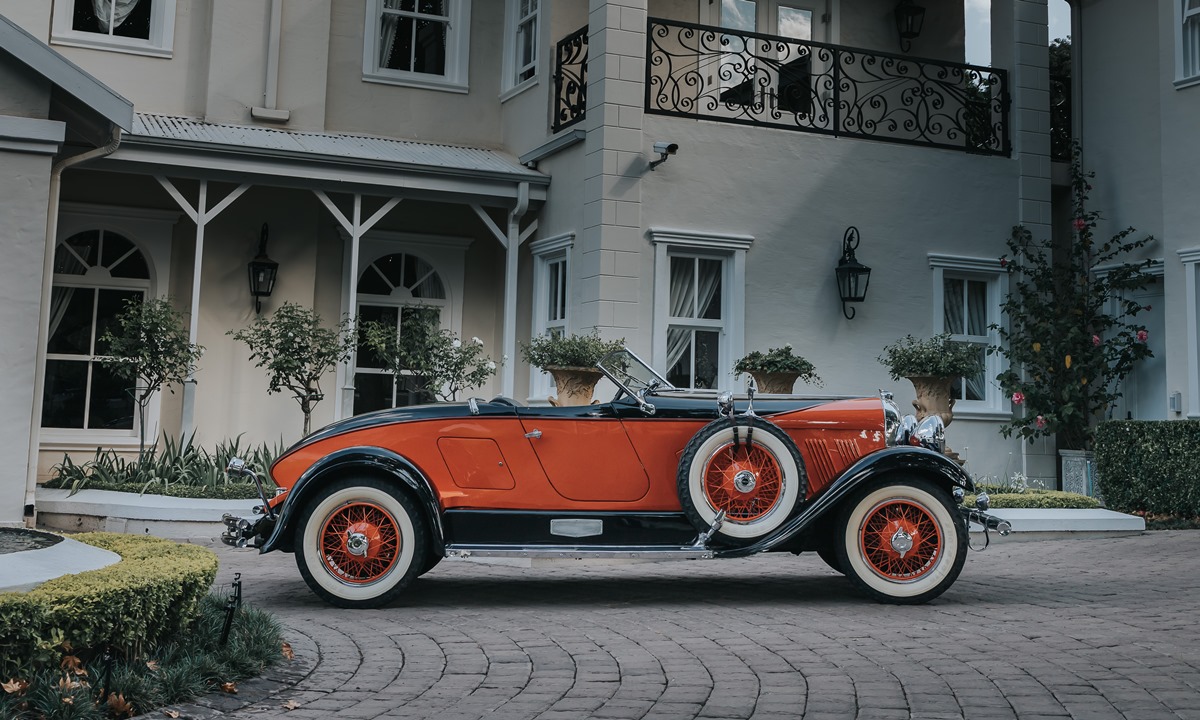
The Boattail Speedster has been in the country for a long time. Her late husband, having owned the car for several years, always wanted to do a proper restoration of the car. “For this restoration, we imported the correct elmwood from America. The entire under-structure of the car is made from wood with a metal frame over it. It took about seven years to complete the restoration along with specialists and craftsmen who assisted us with the project.” The entire body was completely redone with meticulous attention to the original drawings. Even the rubbers on the running boards were made in the exact pattern of the originals. Under the bonnet is a Lycoming straight-eight engine which was completely rebuilt. I took a step back to truly appreciate the finer details and just what an attractive looking car this is. “The colours we’ve painted it is true to the original. Interestingly, they were painted in very vivid colours back in the day; colours like a beautiful Emerald Green, for example.”
The doors are relatively small units, stylishly cut out of the body. They sit flush with the bodywork and opening and closing them reveals another sporty element of the car. Motoring journalists often write about how small performance cars wrap around you when you start driving fast, hugging corners on a track or a flowing mountain pass. Although this car is nowhere near that league, when I climbed aboard, it felt like another adornment altogether, as if I was about to put on the most elegantly tailored suit I’ve ever worn.

The cabin is tight but visually supremely stylish. Your passenger sits close, while the tall, bent gear-lever protrudes from the floor, begging interaction. As with most classic cars, the overly large steering wheel enables sufficient leverage during slow-speed manoeuvres.
In front is the low, narrow two-part windscreen, which acts like a wind deflector, framed in chrome and tilted towards the occupants. It adds to the overall sporty design while the long, louvred bonnet stretches out in front. As I’m relatively tall, I looked over the windscreen and not through it. On my left, most of the rounded, flowing fenders are visible and you cannot miss the large, chrome headlights.
As I pulled off, I realised I would need to be patient during gearshifts and carefully assist the gearlever through each change. It sounds like a chore but it’s all part of the classic car experience and thoroughly enjoyable. After all, this car comes from the first few decades of automotive engineering. Cruising is what it was built to do and the stately aura once on the move is visually and aurally satisfying.

Thankfully, and unlike other cars from this time, the pedals are the correct way around, so no additional thought is required when shifting gears. As there is no rev counter, I had to gauge the maximum speed in each gear the old-fashioned way … listening to the engine. It picks up speed with ease but the owner admits some fine-tuning is required of the newly rebuilt engine which will improve the performance of this pre-war beauty. The brakes work fine but as with any car of this age, I had to taper the speed long before stopping, something that requires quiet roads.
Make no mistake, there is a practical side to this car. The smoothed rectangular body panels can be removed behind the doors and enable entry to the luggage compartment that will fit a number of soft bags and, yes, even a set of golf clubs. Because the spare wheels are mounted on the side of the car, all of this space can be used for luggage.
Parked and done with our drive and shoot, the design continued to demand my attention. That rear bodywork that slopes down and forms the smooth boattail is so visually appealing. It is a design element used on Bugattis, Mercedes-Benz, Deusenbergs and many other high-end cars of the time. Interestingly, the lines of the engine lid louvres, doors, golf-club doors and the stern of the boattail are all raked backwards at an exact angle of 25 degrees.
I wondered why the owner had decided to keep the car for all these years: “The looks, obviously, and it is an easy car to drive that has been so lovingly restored.”
There is a vast difference in the drive of a car such as this and the 1927 Bugatti Type 37 we featured in November 2019, for example. Whereas the Bugatti is a stripped out, lightweight racer (they also made high-performance roadcars), this Auburn is the car you would have used on a trip to the country club, a luxurious outing or a pleasant evening to the theatre. And, boy, what an entrance that must have been.
FAST FACTS
Engine: 4,0-litre, straight-8, petrol
Transmission: 3-speed manual
Power: 67 kW @ 3 200-3 300 r/min
Bore x stroke (mm): 73 x 120,65
Top speed: 100 km/h (tested by Autocar)
Wheelbase: 3 175 mm
Original price: $1 500
Weight: 1 471 kg
Manufactured: 1928

